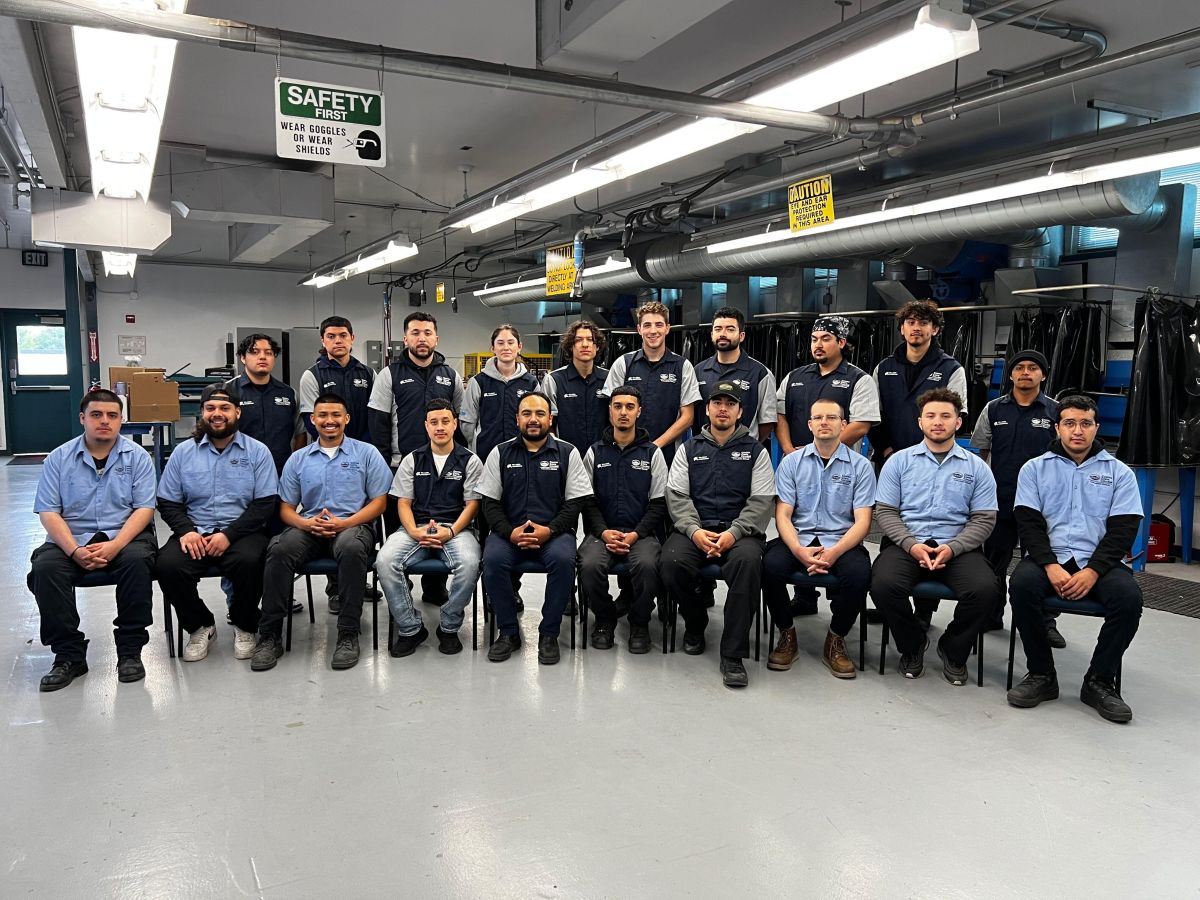Contra Costa College in San Pablo, CA, graduated four more collision repair techs in May, doubling its total taught and turned loose to eight, since affiliating with the Collision Engineering program in 2020.
“We started with one student and now have five cohorts,” said Laura Lozano, professor of collision repair technology and co-chair of the automotive department at Contra Costa.
The community college’s program has 16 active apprentices, a waitlist for the fall, new full-time faculty, and a growing recognition in the San Francisco Bay Area.
Students have received more than $150,000 in teaching, training, tuition reimbursement and other support, get just north of 1,000 hours of paid interning with local body shops, and can step into jobs paying $25 an hour.
 Laura Lozano.
Laura Lozano.
And something else.
There’s More
Graduates also get an associate's degree. The degree is required of all schools in the Collision Engineering program, said Molly Mahoney, national marketing and engagement director for nonprofit Collision Engineering, in St. Louis, MO.
Founded by the Enterprise Mobility Foundation and Ranken Technical College in St. Louis, the Collision Engineering program has grown to seven schools and counts 147 graduates overall, in four years.
 Molly Mahoney.
Molly Mahoney.
“Part of our mission is to change the perception of this career path,” Mahoney said, "to include higher-level technical prowess, and personal and professional development.”
First, “it advances their career. If they want to be a manager, own a shop, or even just go into marketing.”
Second, “it enhances them as people, helps them advocate for themselves in the workforce, and see a clearer and bigger future.”
An associate's degree adds general ed courses to the typical hands-on work regimen.
“There’s a need for apprentices to go directly into the shops,” Mahoney said. “Our focus is how can we fix this problem long-term.”
Lozano and Mahoney say on-the-job training and experience will come, no matter what.
“It’s going to happen; you’re going to be there,” Lozano said. “We’re coming at it from a different angle.”
Apprenticeships “develop the skills of the trade,” Lozano said; general education is “critical thinking, reading, writing, math, some of the science.”
Connecting the two connects the graduate to an industry that’s only going to gain complexity.
Echoing Mahoney, Lozano noted new professional paths -- “estimators, technical training, instructor jobs” -- open to graduates. “These students can do that.”
Graduates learn to work with others, to listen, to think well, even just to use a computer. The approach can also “push back on the narrative that people work on cars because they’re not ‘good enough’” for other professions.
“It’s a critical developmental stage,” and a unique experience, Lozano said. “You’ve left high school, you’ve chosen to be here, you’ve chosen to learn this.”
Work the Plan
Sometimes a plan works too well.
Three of the four May CCC graduates went to work for B&S Hacienda Auto Body in San Ramon, CA; the fourth, Luis Quezada, went to Falcon Collision in Concord, CA.
Then he went back to school, to pursue a bachelor’s degree.
“Luis had expressed interest in continuing on to a four-year degree,” Lozano wrote in an email to Autobody News. “We know this program opens doors, including to a bachelor’s degree. This is not bad news.”
This is also not what Jeff Solis is doing.
 Current student Jeff Solis.
Current student Jeff Solis.
Solis is one of Lozano’s apprentices, working at Walker’s Auto Body in Concord. He sought a two-year program, not to “jump right into a four-year” degree.
Automotive industry changes piqued Solis’ interest, “especially with where cars are going with EVs.” He sees long-term prospects in collision repair. “Cars are losing engines but they’re never losing body parts or panels,” he said.
Contra Costa integrating instruction with inside experience is ideal.
“In school, you learn what you’re doing and why,” Solis said. “Why body filler not something else, what this metal is and how you’d work with it. Then you’re in the shop, doing more of the same techniques as in class. You get the correct information, then you go to work.”
 David Boné, one of Contra Costa's first graduates from the program.
David Boné, one of Contra Costa's first graduates from the program.
“The school encourages us to remain humble with the skills we learn,” Solis added, “but we know our worth in the industry and the jobs out there.”
And, he said, “I plan to stay in my shop.”
Shop Talk
Luxe Collision in San Anselmo, CA, is “the only body shop with five stars in Marin County,” said Norberto Salas, who is also Lozano’s uncle.
Salas and co-owner Lorenzo Avila have employed two Contra Costa students for nearly a year.
Salas likes the program. “They’re not just sanding bumpers; they’re developing into mature people.”
On the shop floor, students have done everything from janitorial and detailing to actual body work. They have to know “electronics, sensors … there are a thousand computers on a car, headlights that move, it’s complex.”
The two workers get welding certification through the program and, “they’re finishing something they started, being paid, have responsibilities. There’s so many ways to learn the actual work,” and they’re going to get that.
“We’re missing the craftsmanship,” Salas said. “At the end of the day, we’re always learning.”














Paul Hughes